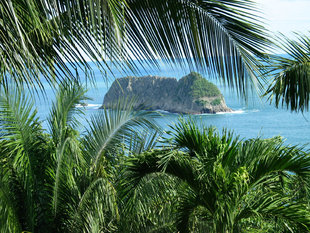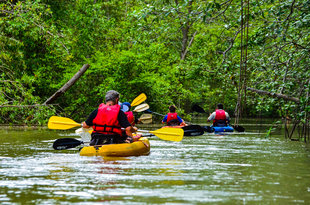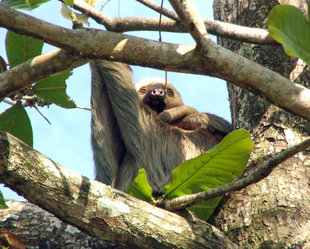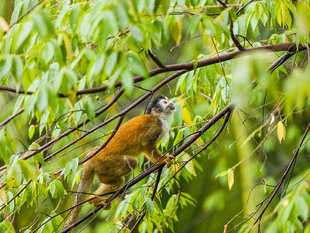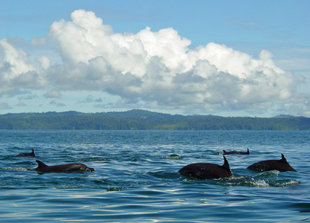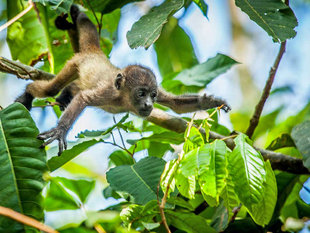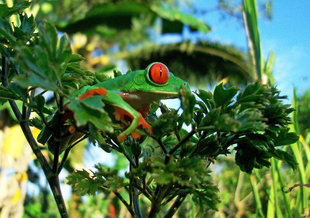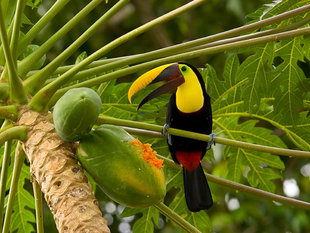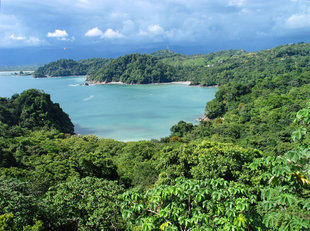Manuel Antonio National Park is set in a stunning terrestrial and marine location, 3 to 4 hours south of San Jose. Created in 1972 the 682 hectare terrestrial section of the park is the country’s smallest with an unequalled diversity of life. The 55,000 hectare marine reserve includes 12 islets just off the coast and is an excellent area to see migrating whales and resident dolphins. Manuel Antonio is in close proximity to the popular coastal town of Quepos, around which there is an excellent range of accommodation.
The main habitats are primary forest, secondary forest, mangrove swamps, ocean, lagoons and beach vegetation. There are a number of ways to see Manuel Antonio. One way is along the trails and boardwalks that take you throughout the park and its varied flora and fauna. One of the best ways to experience the stunning marine areas is by a peaceful kayaking trip. There are also some more adventurous methods of exploring the park such as canopy zip lines and suspended bridges. A mangrove swamp covers about 18 hectares, adding to the biodiversity of the region which can also be explored by sea kayak.
Manuel Antonio’s Wildlife
184 species of birds have been recorded in the Manuel Antonio National Park, 99 mammal species (59 of which are bats), a large number of reptiles and 138 species of tree. Common sightings include two toed and three toed sloths and coatimundis. Three of the four monkey species in Costa Rica live here: the Central American spider monkey (Ateles geoffroyi), white faced capuchin (Cebus capucinus) and the red-backed squirrel monkey (Saimiri oerstedii). If you are interested in reptiles, species commonly seen here include green iguanas, black iguanas or ctenosaurs (Ctenosuara similis), snakes and a small numbers of nesting sea turtles. Birdlife includes brown boobies (Sula leucogaster), tyrant hawk-eagles (Spizaetus tyrannus), grey headed chachalacas (Ortalis cinereiceps) and Baird’s trogon (Trogon bairdii).
Along the coast at low tide there are some fantastic marine pools where it is possible to see sponges, crustaceans and some of the 78 species of fish found here offering excellent opportunities for snorkelling.
Creation and Conservation
Like many of the national parks in Costa Rica, Manuel Antonio was formed due to the threat of development and deforestation. The area had been passed between foreign investors who had at times blocked entry and aggravated the local people. The last private owner was a Frenchman who found out the government where planning a compulsory purchase on the land. In response he set about ‘devaluing’ the land ecologically by tearing down rainforest, bringing in large quantities of construction material and killing off a portion of mangrove swamp with herbicide. Instead of discouraging the government, they sped up the process to conserve the area. After this was successful it was discovered that the developer had planned a massive tourism development for the site including a wharf and hotels; a lucky escape. The health of the park has been maintained by limiting visitor numbers to 600 per day.

